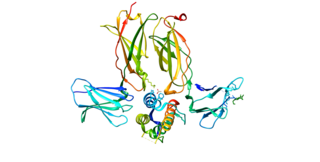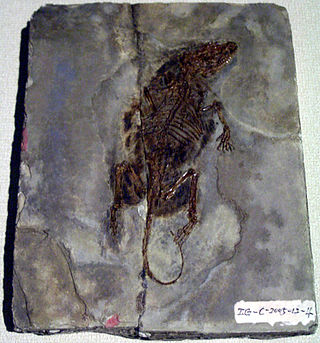The history of literature is the historical development of writings in prose or poetry that attempt to provide entertainment or education to the reader, as well as the development of the literary techniques used in the communication of these pieces. Not all writings constitute literature. Some recorded materials, such as compilations of data are not considered literature, and this article relates only to the evolution of the works defined above.
Luo Gan is a retired Chinese politician. Between 2002 and 2007, Luo was one of China's top leaders, serving as a member of the nine-man Politburo Standing Committee of the Chinese Communist Party, and as the Secretary of Central Political and Legal Affairs Commission (Zhengfawei), which became one of China's most powerful political offices, and well-funded bureaucracies, during Luo's term. In his Zhengfawei role, Luo held oversight for many law-enforcement institutions, including the police, public security officers, armed police, labor camps, prisons, and the judicial system. Luo retired from politics in 2007.
Luo Ben, better known by his courtesy name Guanzhong, was a Chinese novelist who lived during the Ming dynasty. He is also known by his pseudonym Huhai Sanren. Luo Guanzhong is credited with writing Romance of the Three Kingdoms, one of the Four Great Classical Novels of Chinese literature.

Luo Xuejuan is a female Chinese swimmer, who competed mostly in the breaststroke. She is a former world record holder in the 50-meter breastroke.
Luo or Lo refers to the Mandarin romanizations of the Chinese surnames 羅 and 駱. Of the two surnames, wikt:罗 is much more common among Chinese people. According to the Cantonese pronunciation, it can also refer to 盧.

Thioredoxin is a class of small redox proteins known to be present in all organisms. It plays a role in many important biological processes, including redox signaling. In humans, thioredoxins are encoded by TXN and TXN2 genes. Loss-of-function mutation of either of the two human thioredoxin genes is lethal at the four-cell stage of the developing embryo. Although not entirely understood, thioredoxin is linked to medicine through their response to reactive oxygen species (ROS). In plants, thioredoxins regulate a spectrum of critical functions, ranging from photosynthesis to growth, flowering and the development and germination of seeds. Thioredoxins play a role in cell-to-cell communication.
The dozen Luo, Lwo or Lwoian languages are spoken by the Luo peoples in an area ranging from southern Sudan to western Ethiopia to southern Kenya, with Dholuo extending into northern Tanzania and Alur into the Democratic Republic of the Congo. They form one of the two branches of the Western Nilotic family, the other being the Dinka–Nuer. The Southern Luo varieties are mutually intelligible, and apart from ethnic identity they might be considered a single language.

The Luo of Kenya and Tanzania are a Nilotic ethnic group native to western Kenya and the Mara Region of northern Tanzania in East Africa. The Luo are the fourth-largest ethnic group (10.65%) in Kenya, after the Kikuyu (17.13%), the Luhya (14.35%) and the Kalenjin (13.37%). The Tanzanian Luo population was estimated at 1.1 million in 2001 and 3.4 million in 2020. They are part of a larger group of related Luo peoples who inhabit an area ranging from South Sudan, southwestern Ethiopia, northern and eastern Uganda, southwestern Kenya, and northern Tanzania, making them one of the largest ethnic groups in East Africa.
The Dholuo dialect or Nilotic Kavirondo, is a dialect of the Luo group of Nilotic languages, spoken by about 4.2 million Luo people of Kenya and Tanzania, who occupy parts of the eastern shore of Nam Lolwe and areas to the south. It is used for broadcasts on Ramogi TV and KBC.
Neurturin (NRTN) is a protein that is encoded in humans by the NRTN gene. Neurturin belongs to the glial cell line-derived neurotrophic factor (GDNF) family of neurotrophic factors, which regulate the survival and function of neurons. Neurturin’s role as a growth factor places it in the transforming growth factor beta (TGF-beta) subfamily along with its homologs persephin, artemin, and GDNF. It shares a 42% similarity in amino acid sequence with mature GDNF. It is also considered a trophic factor and critical in the development and growth of neurons in the brain. Neurotrophic factors like neurturin have been tested in several clinical trial settings for the potential treatment of neurodegenerative diseases, specifically Parkinson's disease.
Ataxin 7 (ATXN7) is a protein of the SCA7 gene, which contains 892 amino acids with an expandable poly(Q) region close to the N-terminus. The expandable poly(Q) motif region in the protein contributes crucially to spinocerebellar ataxia (SCA) pathogenesis by the induction of intranuclear inclusion bodies. ATXN7 is associated with both olivopontocerebellar atrophy type 3 (OPCA3) and spinocerebellar ataxia type 7 (SCA7).

Leukotriene C4 (LTC4) is a leukotriene. LTC4 has been extensively studied in the context of allergy and asthma. In cells of myeloid origin such as mast cells, its biosynthesis is orchestrated by translocation to the nuclear envelope along with co-localization of cytosolic phospholipase A2 (cPLA2), arachidonate 5-lipoxygenase (5-LO), 5-lipoxygenase-activating protein (FLAP) and LTC4 synthase (LTC4S), which couples glutathione to an LTA4 intermediate. The MRP1 transporter then secretes cytosolic LTC4 and cell surface proteases further metabolize it by sequential cleavage of the γ-glutamyl and glycine residues off its glutathione segment, generating the more stable products LTD4 and LTE4. All three leukotrienes then bind at different affinities to two G-protein coupled receptors: CYSLTR1 and CYSLTR2, triggering pulmonary vasoconstriction and bronchoconstriction.

Thymic stromal lymphopoietin (TSLP) is an interleukin (IL)-2-like cytokine, alarmin, and growth factor involved in numerous physiological and pathological processes, primarily those of the immune system. It shares a common ancestor with IL-7.

Metastasis-associated protein MTA3 is a protein that in humans is encoded by the MTA3 gene. MTA3 protein localizes in the nucleus as well as in other cellular compartments MTA3 is a component of the nucleosome remodeling and deacetylate (NuRD) complex and participates in gene expression. The expression pattern of MTA3 is opposite to that of MTA1 and MTA2 during mammary gland tumorigenesis. However, MTA3 is also overexpressed in a variety of human cancers.

Trechnotheria is a group of mammals that includes the therians and some fossil mammals from the Mesozoic Era. It includes both the extinct symmetrodonts and the living Cladotheria.
G protein-coupled receptor 137B also known as GPR137B is a G protein-coupled receptor which in humans is encoded by the GPR137B gene. The expression of GPR137B is upregulated during kidney development.

In molecular biology, mir-433 is a short non-coding RNA molecule. MicroRNAs (miRNAs) function as posttranscriptional regulators of expression levels of other genes by several mechanisms. They play roles in development, metabolism and carcinogenesis.
Luodao or Luoism (罗教), originally Wuweiism (无为教), refers to a Chinese folk religious tradition, a wide range of sect organisations flourishing over the last five hundred years, which trace their origins back to the mystic and preacher Luo Menghong (1443–1527), the Patriarch Luo and the revelation contained in his major scripture, the Wǔbùliùcè, the official title of which is The Scroll of Apprehending the Way through Hard Work and that marked the beginning of the precious scrolls' tradition.
The Luo alphabet was invented by Kefa Ombewa and Paul Sidandi between 2009 and 2012 to write Luo languages, specifically Dholuo of Kenya, in a unique way. The script is a left-to-right alphabet, with 33 letters connected to each other by a line running along the bottom.
The human identical sequence (HIS) is a sequence of RNA elements, 24-27 nucleotides in length, that coronavirus genomes share with the human genome. In pathogenic progression, HIS acts as a NamiRNA (nuclear activating miRNA) through the NamiRNA-enhancer network to activate neighboring host genes. The first HIS elements was identified in the SARS-CoV-2 genome, which has five HIS elements; other human coronaviruses have one to five. It has been suggested that these sequences can be more generally termed "host identical sequences" since similar correlations have been found between the genome of SARS-CoV-2 and multiple potential hosts (bats, pangolins, ferrets, and cats).








